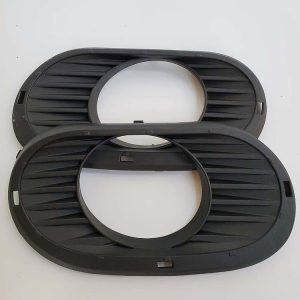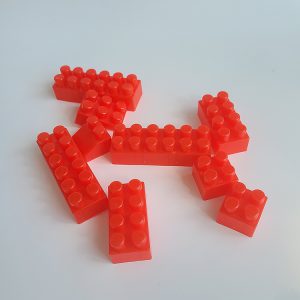A Comprehensive Guide to Mold Making Processes
Introduction to Mold Making
Mold making is a crucial step in numerous manufacturing processes that enables the formation of a myriad of objects, ranging from simple household items to complicated automotive parts. The process revolves around creating a mold cavity precisely in the shape of the object to be manufactured. By filling this cavity with a chosen molten material that later solidifies, an exact replica of the original is achieved. The precision and repeatability of this process make mold making exceedingly versatile and vital in producing high-quality components across industries.

Understanding the Importance of Mold Making
Mold making is the cornerstone of multiple manufacturing processes. It not only ensures rapid reproduction of the same part countless times but also guarantees each product’s consistency in shape, size, and quality. Mold making is thus vital for time efficiency, cost-effectiveness, and precision manufacturing, ranging from simple plastic toys to sophisticated aerospace components. Simultaneously, it maintains a high degree of flexibility, making it adaptable to various product designs and material choices.
Choosing the Right Materials for Mold Making
Material selection for mold making is a critical decision, primarily dictated by the type of mold and to-be-molded product characteristics. Steel is a common choice for its superior strength and durability, ideal for high-volume production such as automotive parts. Aluminium is favored for its excellent thermal conductivity and quick cooling, often used in low-volume, highly detailed molds. Copper combines excellent heat conductivity and corrosion resistance, suitable for intricate molds for electronic components. Silicone, soft and temperature-resistant, is used for low-stress applications like food molding.
Basics of Mold Design and Construction
Mold design and construction are complex processes involving numerous stages. Initial stages include developing a detailed mold concept, considering the final product’s geometry, the chosen molding process, production volume, and the material’s processing characteristics. This is then transformed into a 3D design using CAD software, and then simulations are tested to ascertain mold performance and quality. The approved design is then physically constructed using milling, EDM, or other machine processes before undergoing a series of rigorous tests and inspections performance verification.
Preparing the Mold Making Process: Steps and Considerations
Preparation is key in the mold-making process. It begins with a precise, detailed design of the end product and the mold structure, typically using CAD software. The chosen material for the end product and the mold vastly affects the design due to different materials’ molding and cooling properties. The design is optimized and simulated to estimate the mold’s behavior during the molding process. The precision and accuracy of this preparation phase directly affect the product’s quality and the overall process efficiency.
Different Methods of Mold Making
Numerous mold-making methods cater to varied production needs. Injection molding is suitable for high-volume, complex plastic part production. Compression molding is often used for large, fairly simple parts. Rotational molding is ideal for creating hollow plastic products. Other methods like transfer molding, blow molding, and thermoforming each have unique applications, ideal for specific product requirements.
Advantages and Disadvantages of Each Mold Making Method
Each mold-making method has its strengths and weaknesses. Injection molding, for instance, is highly efficient for mass production but requires high initial investment for mold creation. Compression molding can form large components but is less precise compared to other methods. Blow molding is ideal for hollow parts, yet not suitable for solid or complex geometries. Understanding these pros and cons assists in choosing the best method for a specific production need.
Case Studies: Real-Life Applications of Mold Making Processes
Automotive Industry: The production of various car parts, especially ones with complex geometries and high strength requirements, relies heavily on mold making. From tiny components like knobs and buttons to larger parts like door panels and casings, various molds are employed. One prominent example is the engine block – being a large, intricate, and critical component, it utilizes sand-casting molds due to their adaptability to complex designs and high melting temperatures.

Medical Equipment: In the medical industry, precision and sanitation are paramount. Hence, injection molds are widely used for creating sterile, detailed medical device components at a high volume. For instance, syringes, surgical instruments, and implantable devices are all produced via injection molding for their consistency, precision, and speed of production.
Toy Manufacturing: The toy industry thrives on the versatility and cost-effectiveness of mold making. An emblematic example is Lego – the iconic, uniform, interlocking bricks are consistently produced in millions using injection molds. Despite the bricks’ simplicity, the precision required for them to connect seamlessly highlights the mold-making precision.

Frequently Asked Questions (FAQs) about Mold Making Processes
Q1: What materials are frequently used in mold making?
A: The choice of mold material depends on the molding process and production volume. Common materials include steel(718/718H/S316/P20 ects), aluminum, copper, silicone, and rubber.
Q2: Why is mold making so important in manufacturing?
A: Mold making allows for the precise, consistent, and high-volume production of parts. It enables complexity in design and accelerates the production process, thereby increasing efficiency and reducing costs.
Q3: Can the same mold be used for varying products?
A: Generally, molds are carefully designed for a specific product. However, some molds, particularly modular molds or family molds, can produce varying yet similar products.